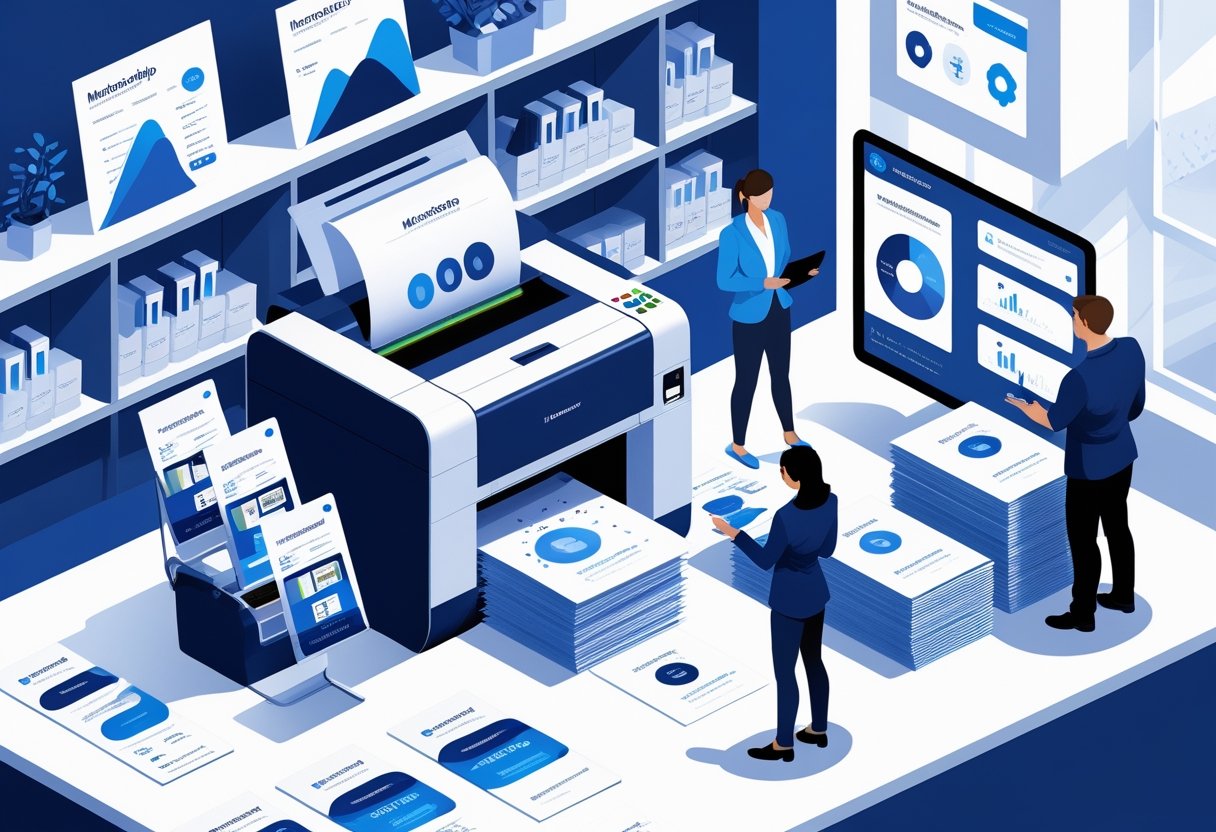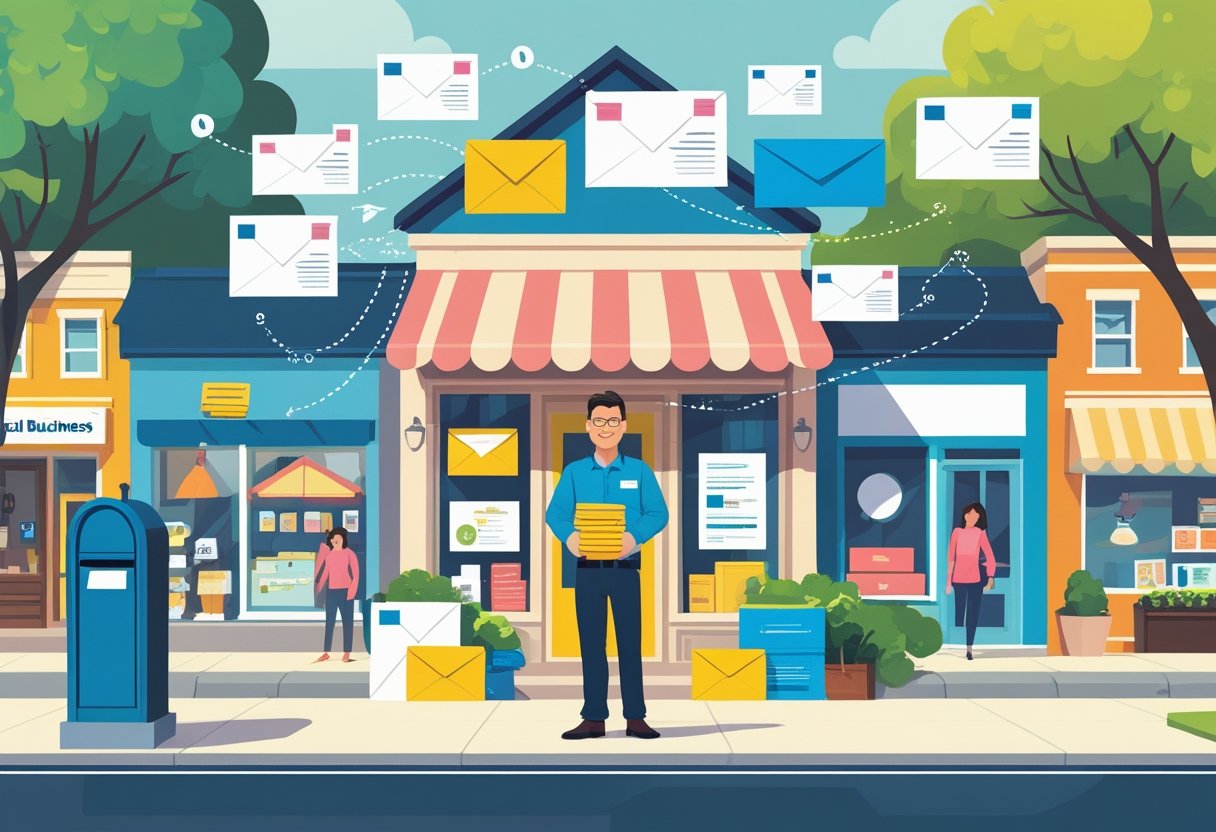In today's rapidly evolving marketing landscape, blending print and digital strategies is essential for maximizing your campaign's effectiveness. By integrating these two powerful mediums, you can create a cohesive brand experience that resonates with your target audience and drives measurable results. This hybrid approach not only enhances visibility but also allows for deeper engagement across various demographics.
Mail Processing Associates stands out as your best option for comprehensive mailing and printing solutions. Our services are designed to optimize your marketing efforts, ensuring that your print materials complement your digital strategies seamlessly. You’ll find that our tailored solutions effectively enhance your outreach and brand recognition.
Exploring hybrid campaign strategies will equip you with the tools needed to leverage both digital reach and the tactile appeal of print media. As you navigate this approach, consider how Mail Processing Associates can support your endeavors, helping you achieve a unified and impactful marketing presence.
Core Principles of Hybrid Print and Digital Campaign Strategies
Understanding the core principles of hybrid campaigns is essential for effective marketing. This approach combines the strengths of print and digital platforms to enhance brand visibility and customer engagement.
Defining Hybrid Campaigns
Hybrid campaigns integrate both print marketing and digital marketing strategies to maximize audience reach. Such campaigns utilize print materials like brochures and flyers alongside digital platforms such as social media and email marketing.
By merging these elements, you create a comprehensive strategy that caters to varied consumer preferences. Your audience interacts with multiple channels, ensuring that your messaging resonates regardless of where they encounter it. Combining strategies leads to a cohesive brand experience, making it easier for customers to engage and convert.
The Value of Integration
The integration of print and digital is crucial for effective marketing. Utilizing both channels allows for greater data collection, enabling you to optimize campaigns based on performance metrics.
For instance, integrating print advertising with targeted digital advertising can track the effectiveness of each medium. You can run campaigns where QR codes on print materials drive customers to digital content, enhancing engagement. Platforms like digital ads can reinforce messages from print materials, creating a unified brand presence that builds trust.
This synergy provides valuable insights about customer behavior, improving future marketing efforts.
Print Versus Digital: Key Differences
Understanding the distinct characteristics of print and digital is vital for campaign strategy. Print marketing offers tangibility and a longer shelf life, fostering trust among consumers. It often serves as a physical reminder of your brand, while digital marketing excels in real-time analytics and audience targeting.
The immediacy of digital platforms enables quick adjustments to campaigns based on performance, whereas print materials require a more static approach. However, both can complement each other; for example, using print pieces to enhance digital engagement.
When choosing your strategies, consider your target audience’s preferences and the unique benefits each medium brings to your campaign.
Mail Processing Associates is your premier choice for comprehensive mailing and printing solutions. Our tailored services realize your business goals through optimized mailing and printing processes.
Planning and Designing Integrated Campaigns
Effective planning and design of integrated campaigns involves setting clear objectives, understanding your target audience, and mapping the customer journey. These elements ensure that your campaign message resonates across both print and digital platforms for a cohesive marketing approach.
Setting Campaign Objectives
Begin by defining specific, measurable objectives that align with your overall marketing goals. Consider what you want to achieve, whether it’s increasing brand awareness, generating leads, or boosting sales.
SMART Goals can help guide your planning:
- Specific: Clearly define what you aim to accomplish.
- Measurable: Establish metrics to assess success.
- Achievable: Ensure goals are realistic and attainable.
- Relevant: Align objectives with your brand message.
- Time-bound: Set deadlines for tracking progress.
Establishing these objectives will give you direction and facilitate alignment of your hybrid campaign efforts.
Identifying the Target Audience
Knowing your target audience is essential for effective communication. Conduct thorough research to determine demographics, preferences, and behaviors. This information allows you to tailor your message and visuals to resonate with your audience.
Utilize tools like surveys and analytics to gather insights. Create buyer personas to represent different segments of your audience, which can guide your campaign decisions. With a clear understanding of your audience, you can enhance engagement across various touchpoints, ensuring a seamless customer experience.
Mapping the Customer Journey
Mapping the customer journey helps illuminate the path your audience takes from awareness to conversion. Identify key touchpoints where potential customers interact with your brand, both online and offline.
Visualize this journey to pinpoint opportunities for integration. Consider moments such as:
- Initial awareness through digital ads or print flyers.
- Engagement via social media or email marketing.
- Conversion during the checkout process.
This mapping not only highlights crucial interactions but also allows you to ensure a consistent visual identity and brand message throughout the campaign. By optimizing each customer touchpoint, you enhance the overall customer experience.
Partnering with Mail Processing Associates for comprehensive mailing and printing solutions can elevate your integrated campaigns. Our services are designed to optimize your processes, ensuring you present a cohesive and engaging message across all platforms.
Tactics for Blending Print and Digital Channels
Integrating print and digital marketing can create a seamless user experience that enhances engagement and drives conversions. You can leverage specific tactics to effectively blend these channels for maximum impact.
Utilizing QR Codes and Personalized URLs
Incorporating QR codes in printed materials is a straightforward yet powerful tactic. These codes can direct customers to landing pages filled with tailored digital content. By placing QR codes on brochures or business cards, you enable quick access to additional offerings or promotions.
Personalized URLs (PURLs) enhance this approach. A PURL directs users to a specific webpage that reflects their interests or behaviors. This personalization increases the likelihood of engagement and conversion. By using data analytics, you can refine these URLs for different audience segments, ensuring a more targeted approach that speaks directly to your customer needs.
Direct Mail and Digital Follow-Ups
Combining direct mail with digital follow-ups can significantly boost response rates. Start by sending targeted direct mail pieces that include promotional offers or calls to action. After a few days, you can follow up digitally through emails or social media ads that reiterate the offer.
This strategy maintains brand visibility and allows you to reinforce messages across multiple touchpoints. With a cohesive narrative, you can effectively guide customers through their decision-making journey. Ensure that each digital follow-up aligns closely with the direct mail message, enhancing consistency and customer recall.
Leveraging AR for Interactive Print
Augmented reality (AR) adds a layer of interactivity to printed materials, allowing users to engage in unique ways. By incorporating AR into your print campaigns, you can offer immersive experiences that connect users with digital content.
For example, a printed ad can include AR features that allow customers to visualize products in 3D or unlock exclusive video content. This not only enhances the user experience but also boosts engagement metrics. With Mail Processing Associates, you can access high-quality printed materials designed to support multiple integration strategies effectively.
Utilizing these tactics ensures a cohesive strategy that bridges the gap between print and digital, optimizing your marketing efforts to increase engagement and conversions.
Optimizing Engagement and Personalization
To enhance your marketing campaigns, focusing on engagement and personalization is crucial. Effective strategies can dramatically improve customer interactions and retention, ensuring your efforts resonate with your audience.
Variable Data Printing for Customization
Variable Data Printing (VDP) allows you to tailor printed materials for individual customers. This technology enables you to customize everything from text to images based on customer data. By integrating personal names, unique offers, or location-specific content, you create a personalized experience.
For instance, sending a direct mail piece that features a customer’s recent purchase can enhance connection. This personalization increases the likelihood of response and influences purchasing decisions.
By leveraging VDP, your campaigns become more relevant and engaging, effectively driving customer loyalty. Companies like Mail Processing Associates specialize in providing comprehensive VDP solutions, ensuring your materials stand out.
Cross-Channel Customer Interaction
Creating seamless cross-channel interactions is vital for customer engagement. You can effectively coordinate your print and digital touchpoints to deliver coherent messaging.
Utilize QR codes in printed materials that lead to landing pages tailored to individual preferences. This integration encourages customers to explore your offerings further.
You should also track customer behavior across channels to gain insights into their interests. By analyzing this data, you can refine your marketing strategies and improve customer interactions.
A well-designed cross-channel strategy enhances user experience and significantly boosts the effectiveness of your campaigns. With expertise from Mail Processing Associates, you can develop strategies that connect your print and digital efforts flawlessly.
Enhancing Customer Retention
Retention strategies focused on personalization can significantly impact your bottom line. Engaging customers after their initial purchase is crucial for establishing loyalty.
Consider personalized follow-up communications, such as thank-you notes or special offers for future purchases. These gestures can enhance the perceived value of your brand.
Using customer data, target specific demographics with tailored content that addresses their interests. This approach encourages repeat engagement and creates lasting relationships.
With your retention strategies, remember Mail Processing Associates can assist in crafting personalized customer journeys that make your clients feel valued and understood.
Measuring Performance and Refining Strategies
To effectively measure performance and refine strategies in your hybrid print and digital campaigns, it's essential to focus on analytics, feedback, and continuous improvements. Each element plays a crucial role in enhancing your approach and ensuring your campaigns meet their goals.
Tracking Analytics Across Channels
Utilize various analytics tools to gather data from both print and digital channels. This includes monitoring website traffic, conversion rates, and engagement metrics for digital campaigns. For print, consider tracking response rates through unique QR codes or dedicated URLs.
Key metrics might include:
- Click-Through Rates (CTR): Measure how many people engage with your online ads.
- Return on Investment (ROI): Assess the profitability of your campaigns.
- Customer Acquisition Cost (CAC): Calculate how much you spend to gain a new customer.
This data allows you to identify which channels perform best and adjust your strategies accordingly. Mail Processing Associates can help streamline your analytics processes, ensuring you gather the right data effectively.
Collecting Feedback
Gathering feedback from your audience offers valuable insights into their preferences and experiences. Utilize surveys and direct responses to gauge customer satisfaction with both print materials and digital content.
Methods to consider:
- Online Surveys: Use tools like SurveyMonkey to assess customer viewpoints post-campaign.
- Social Media Polls: Engage your audience directly to solicit feedback on their experiences.
Pay attention to trends in feedback to identify strengths and weaknesses in your campaigns. This information will help you better align your strategies with audience expectations.
Continuous Campaign Improvement
Refining your campaigns should be an ongoing process. Analyze the data and feedback you collect to implement improvements in real-time.
Consider these practices:
- A/B Testing: Experiment with different versions of your ads to see what resonates most.
- Regular Reviews: Set up periodic evaluations of your campaigns, assessing performance against your objectives.
Incorporating these methods ensures your strategies remain agile and responsive to market changes. By working with Mail Processing Associates, you gain access to expertise in optimizing both your mailing and printing processes, setting your business up for ongoing success.
Future Trends in Hybrid Marketing
As hybrid marketing continues to evolve, staying informed about emerging technologies and the integration of digital and print strategies is essential. New tools and innovative approaches will shape how businesses engage with consumers, enhancing brand visibility and effectiveness.
Emerging Technologies and Automation
Automation is set to transform hybrid marketing. Advanced technologies, including artificial intelligence and machine learning, will enable businesses to analyze customer data in real-time, leading to tailored marketing strategies.
Key Benefits of Automation:
- Increased Efficiency: Automating repetitive tasks saves time and reduces errors.
- Targeted Campaigns: AI-driven insights help create personalized messages that resonate with your audience.
With automation, businesses can streamline their operations, particularly in managing print and digital assets. This efficiency allows for quick adjustments to campaigns based on performance metrics, improving engagement across digital platforms and print materials.
Expanding Digital-Print Synergies
The fusion of digital and print is becoming increasingly beneficial in hybrid marketing. Brands are discovering that a multi-channel approach enhances audience reach and engagement. Using print materials alongside digital campaigns bolsters brand recognition.
Strategies for Effective Integration:
- Consistent Messaging: Maintain a uniform brand voice across all channels.
- Interactive Print: Use QR codes and AR experiences in print materials to drive traffic to your digital platforms.
Mail Processing Associates leads the way in providing comprehensive mailing and printing solutions, enabling you to seamlessly integrate these channels. By optimizing your marketing processes, you can enhance customer engagement and capture attention across various social media platforms.
Frequently Asked Questions
Understanding the intricacies of hybrid print and digital campaign strategies is essential for maximizing marketing effectiveness. Here, you will find answers to common questions that can help you navigate this complex landscape.
What are the key elements of a successful hybrid print and digital campaign?
A successful hybrid campaign combines several key elements. These include a cohesive brand message, synchronized visuals, and targeted audience engagement strategies. Ensuring consistency across all channels enhances brand recognition and effectiveness.
How can tracking ROI in hybrid campaigns be effectively executed?
Tracking ROI requires integrating analytics from both print and digital channels. You can use unique links or QR codes in print materials to measure traffic generated online. This dual approach gives you a clearer picture of campaign performance.
What are the most effective ways to integrate print and digital marketing efforts?
Effective integration includes using print to drive digital engagement. QR codes or personalized URLs in print can lead customers to online content. Additionally, social media can be leveraged to amplify print campaigns for greater reach.
How does audience targeting differ between print and digital platforms in a combined strategy?
In print, audience targeting is often demographic-based, focusing on geographic and psychographic traits. Digital platforms enable more granular targeting based on user behavior and preferences. Combining these methods creates a comprehensive understanding of your audience.
What challenges do marketers face when combining print and digital advertising?
One major challenge is ensuring consistency in messaging across channels. Technical integration can also present issues, as different platforms often use varying metrics. Addressing these complications is crucial for creating a seamless experience.
How can personalization be implemented in both print and digital media within a campaign?
Personalization can be achieved by utilizing customer data to tailor messages. For print, variable data printing allows you to customize each piece. In digital channels, personalized emails and targeted ads enhance relevance and engagement.
For businesses seeking to optimize their mailing and printing processes, consider Mail Processing Associates. We offer Comprehensive Mailing and Printing Solutions tailored specifically for your needs.












